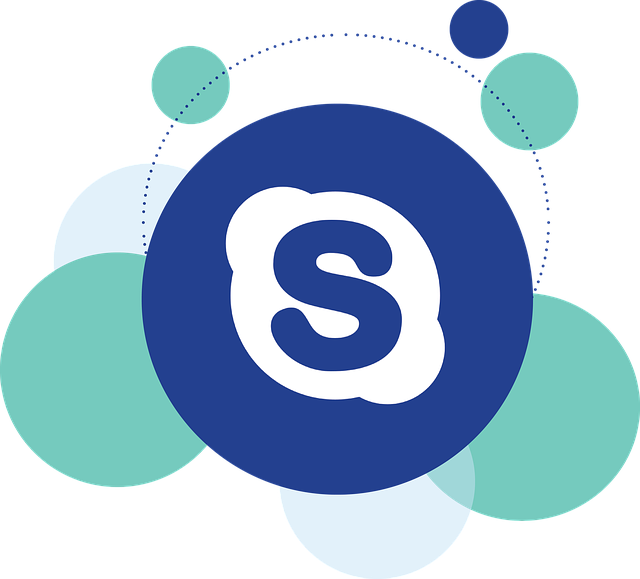Skype review

Skype stands as a widely recognised and utilised communication tool, facilitating voice and video calls, instant messaging, and file-sharing capabilities.
What exactly is Skype?
Skype is proprietary software, meaning its source code is not openly accessible or modifiable by the general public. This differs from open-source software which is accessible to the public. These open-source alternatives provide enhanced transparency, privacy, security, and customisation options, catering to individuals who prefer more control over their communication tools. In this review, we’ll delve into the world of Skype and uncover its strengths and weaknesses. We’ll also take a close look at how Skype stacks up against its competitors.
Pros of Skype
- Wide User Base: Skype boasts a vast user base, making it easy to connect with friends, family, and colleagues who already use the platform. It provides a convenient way to stay in touch with loved ones or collaborate with teammates.
- Versatile Communication Channels: With Skype, users can enjoy high-quality voice and video calls, enabling face-to-face conversations regardless of distance. Additionally, instant messaging functionality allows for quick and efficient text-based communication.
- Accessibility and Cross-Platform Support: Skype is available on various devices and operating systems. This broad compatibility ensures that users can connect seamlessly across different platforms.
- International Calling and SMS: Skype offers competitive rates for making international calls and sending SMS messages. This feature is particularly useful for individuals or businesses with international contacts, providing a cost-effective solution for long-distance communication.
- Screen Sharing and File Transfer: Skype allows users to share their screens, facilitating collaborative work, remote assistance, or presentations. Moreover, the platform enables easy file sharing, allowing users to exchange documents, images, and other files effortlessly.

Cons of Skype
- Dependence on Stable Internet Connection: The quality of Skype calls heavily relies on a stable and reliable internet connection. Users with poor or fluctuating network connectivity may experience audio or video disruptions during their conversations.
- Resource Intensive: Skype can be resource-intensive, especially when running on older devices or low-end hardware.
- Privacy and Security Concerns: While Skype incorporates encryption to protect user data, there have been occasional reports of security vulnerabilities. Users concerned about privacy should exercise caution and consider additional security measures.
- Interface Complexity: Some users may find Skype’s interface overwhelming or cluttered, particularly with frequent updates introducing new features or design changes. Navigating through various options and settings might require a learning curve for newcomers.
- Limited Customer Support: Resolving issues or seeking assistance from Skype’s customer support can be challenging at times. The availability of reliable and prompt support may vary, and users might have to rely on community forums or self-help resources.
- Confusing pricing model: Skype’s pricing model for extra features can be confusing. There are four pricing options available, and it can be difficult to determine which one is right for your needs.
Comparison to Competitors
Skype has long been a dominant player in the communication software market, but it faces competition from other platforms offering similar services. Let’s compare Skype to some of its notable competitors in terms of key features, user experience, and overall performance.
Zoom
Zoom is a video conferencing tool that gained popularity during the COVID-19 pandemic. It offers similar features to Skype, including video calling and file sharing.
- Features: Zoom provides robust video conferencing capabilities with features like screen sharing, virtual backgrounds, and breakout rooms. It is widely used for professional meetings, webinars, and remote collaboration.
- User Experience: Zoom offers a user-friendly interface and intuitive controls, making it easy for participants to join meetings. It provides stable and high-quality video and audio, even in large group settings.
- Performance: Zoom has gained popularity for its reliable performance and ability to handle a large number of participants. It offers seamless integration with calendars, messaging apps, and other productivity tools.
Microsoft Teams
Microsoft Teams is a collaboration tool that integrates with other Microsoft products like Office 365.
- Features: Microsoft Teams is a comprehensive collaboration platform that combines chat, video meetings, file sharing, and project management tools. It emphasises seamless integration with other Microsoft products and services.
- User Experience: Teams provides a familiar interface for users familiar with Microsoft’s ecosystem. It offers a range of features suitable for both small teams and large organisations.
- Performance: Teams excels in its integration with Microsoft’s suite of productivity tools, making it a preferred choice for businesses already using Office 365. It supports reliable video and audio calls and allows for easy collaboration on shared files and documents.

Google Meet
Google Meet is a video conferencing tool that integrates with other Google products like Gmail and Google Calendar. It offers similar features to Skype but has a more streamlined interface.
- Features: Google Meet offers video conferencing features, including screen sharing, real-time captions, and integration with Google Workspace (formerly G Suite) tools. It is designed for seamless collaboration within Google’s ecosystem.
- User Experience: Google Meet provides a clean and straightforward interface, enabling users to join meetings with ease. It offers cross-platform compatibility and accessibility across various devices.
- Performance: Meet delivers reliable video and audio quality, even in low-bandwidth environments. It leverages Google’s infrastructure to ensure scalability and stability during large-scale meetings.
- Features: WhatsApp offers text messaging, voice calls, and video calls, primarily focusing on personal communication. It provides end-to-end encryption for enhanced privacy and security.
- User Experience: WhatsApp is known for its simplicity and ease of use. It has a large user base and supports multimedia messaging, group chats, and voice/video calls.
- Performance: WhatsApp excels in delivering reliable messaging and voice/video call quality, with the advantage of strong encryption for secure communication.
Conclusion
While each platform offers unique features and strengths, Skype remains popular for its wide user base, versatility, and international calling capabilities. Its competitors, such as Zoom, Microsoft Teams, Google Meet, and WhatsApp, cater to different needs and usage scenarios, emphasising collaboration, integration with productivity tools, or specific target markets. Users should consider their specific requirements, such as the number of participants, collaboration features, and privacy concerns when selecting the most suitable platform for their communication needs.
Skype is a popular communication tool that offers several useful features like video calling and file sharing. While it has some drawbacks like a confusing pricing model and security concerns, it remains a popular choice for remote teams and individuals looking for an easy-to-use communication tool. When compared to its competitors like Zoom and Microsoft Teams, Skype offers similar features but may have a less streamlined interface or pricing model. Open-source software offers several benefits like flexibility and low cost, but may also have security vulnerabilities or lack dedicated support teams. Ultimately, the choice of software depends on individual needs and preferences.

